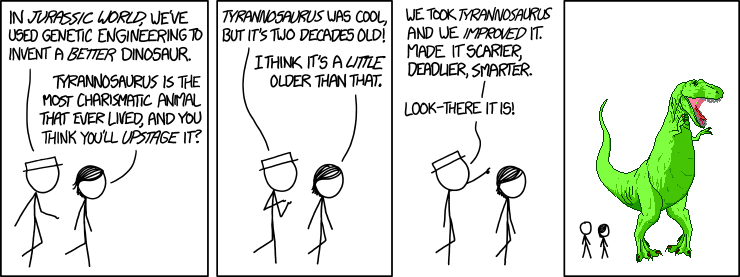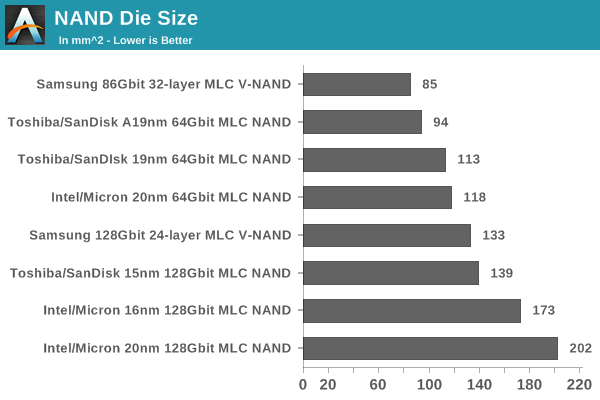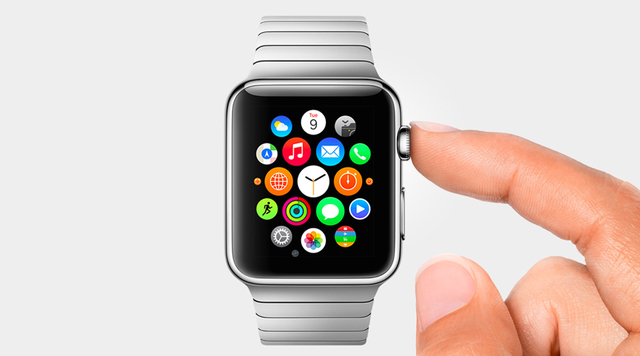
We've finally heard from Officer Darren Wilson.
Wilson had been publicly silent since the events of August 9, when he shot and killed 18-year-old Michael Brown in Ferguson, Missouri. And, even as the grand jury announced its decision not to indict him, he remained silent. He had his attorneys release a statement on his behalf.
But on Monday night, St. Louis County prosecutor Robert McCulloch released the evidence given to the grand jury, including the interview police did with Wilson in the immediate aftermath of the shooting. And so we got to read, for the first time, Wilson's full, immediate account of his altercation with Brown.
And it is unbelievable.
I mean that in the literal sense of the term: "difficult or impossible to believe." But I want to be clear here. I'm not saying Wilson is lying. I'm not saying his testimony is false. I am saying that the events, as he describes them, are simply bizarre. His story is difficult to believe.
The story Wilson tells goes like this:
At about noon on August 9th, Wilson hears on the radio that there's a theft in progress at the Ferguson Market. The suspect is a black male in a black shirt.
Moments later, Wilson sees two young black men walking down the yellow stripe in the center of the street. He pulls over. "Hey guys, why don't you walk on the sidewalk?" They refuse. "We're almost at our destination," one of them replies. Wilson tries again. "But what's wrong with the sidewalk?" he asks.
And then things get weird.
Brown's response to "what's wrong with the sidewalk?", as recorded by Wilson, is "fuck what you have to say." Remember, Wilson is a uniformed police officer, in a police car, and Brown is an 18-year-old kid who just committed a robbery. And when asked to use the sidewalk, Wilson says Brown replied, "Fuck what you have to say."
Wilson says Brown replied, "Fuck what you have to say."
Wilson backs his car up and begins to open the door. "Hey, come here," he said to the kid who just cursed at him. He says Brown replied, "What the fuck you gonna do?" And then Brown, in Wilson's telling, slams the car door closed. Wilson tries to open the door again, tells Brown to get back, and then Brown leans into the vehicle and begins punching him.
/cdn0.vox-cdn.com/uploads/chorus_asset/file/2491494/454139618.0.jpg)
Photos surround Michael Brown's casket in Ferguson, MO. (Richard Perry-Pool/Getty Images)
Let's take a breath and recap. Wilson sees two young black men walking in the middle of the street. He pulls over and politely asks them to use the sidewalk. They refuse. He asks again, still polite. Brown tells Wilson — again, a uniformed police officer in a police car — "fuck what you have to say." Wilson stops his car, tries to get out, and Brown slams the car door on him and then begins punching him through the open window.
What happens next is the most unbelievable moment in the narrative. And so it's probably best that I just quote Wilson's account at length on it.
I was doing the, just scrambling, trying to get his arms out of my face and him from grabbing me and everything else. He turned to his...if he's at my vehicle, he turned to his left and handed the first subject. He said, "here, take these." He was holding a pack of — several packs of cigarillos which was just, what was stolen from the Market Store was several packs of cigarillos. He said, "here, hold these" and when he did that I grabbed his right arm trying just to control something at that point. Um, as I was holding it, and he came around, he came around with his arm extended, fist made, and went like that straight at my face with his...a full swing from his left hand.
So Brown is punching inside the car. Wilson is scrambling to deflect the blows, to protect his face, to regain control of the situation. And then Brown stops, turns to his left, says to his friend, "Here, hold these," and hands him the cigarillos stolen from Ferguson Market. Then he turns back to Wilson and, with his left hand now freed from holding the contraband goods, throws a haymaker at Wilson.
Every bullshit detector in me went off when I read that passage. Which doesn't mean that it didn't happen exactly the way Wilson describes. But it is, again, hard to imagine. Brown, an 18-year-old kid holding stolen goods, decides to attack a cop and, while attacking him, stops, hands his stolen goods to his friend, and then returns to the beatdown. It reads less like something a human would do and more like a moment meant to connect Brown to the robbery.
Wilson next recounts his thought process as he reached for a weapon. He considered using his mace, but at such close range, the mace might get in his eyes, too. He doesn't carry a taser with a fireable cartridge, but even if he did, "it probably wouldn't have hit [Brown] anywhere". Wilson couldn't reach his baton or his flashlight. So he went for his gun.
Brown sees him go for the gun. And he replies: "You're too much of a fucking pussy to shoot me."
"You're too much of a fucking pussy to shoot me."
Again, stop for a moment and think about that. Brown is punching Wilson, sees the terrified cop reaching for his gun, and says "You're too much of a fucking pussy to shoot me." He dares him to shoot.
/cdn0.vox-cdn.com/uploads/chorus_asset/file/2491498/453759770.0.jpg)
A protestors holds up a sign saying "don't shoot". (Joe Raedle/Getty Images)
And then Brown grabs Wilson's gun, twists it, and points it at Wilson's "pelvic area". Wilson regains control of the firearm and gets off a shot, shattering the glass. Brown backs up a half step and, realizing he's unharmed, dives back into the car to attack Wilson. Wilson fires again, and then Brown takes off running. (You can see the injuries Wilson sustained from the fight in these photographs.)
Wilson exits the car to give chase. He yells at Brown to get down on the ground. Here, I'm going to go back to Wilson's words:
When he stopped, he turned, looked at me, made like a grunting noise and had the most intense, aggressive face I've ever seen on a person. When he looked at me, he then did like the hop...you know, like people do to start running. And, he started running at me. During his first stride, he took his right hand put it under his shirt into his waistband. And I ordered him to stop and get on the ground again. He didn't. I fired multiple shots. After I fired the multiple shots, I paused a second, yelled at him to get on the ground again, he was still in the same state. Still charging, hand still in his waistband, hadn't slowed down.
The stuff about Brown putting his hand in his waistband is meant to suggest that Wilson had reason to believe Brown might pull a gun. But it's strange. We know Brown didn't have a gun. And that's an odd fact to obscure while charging a police officer.
Either way, at that point, Wilson shoots again, and kills Brown.
There are inconsistencies in Wilson's story. He estimates that Brown ran 20-30 feet away from the car and then charged another 10 feet back towards Wilson. But we know Brown died 150 feet away from the car.
There are also consistencies. St Louis prosecutor Robert McCulloch said that Brown's DNA was found inside Wilson's car, suggesting there was a physical altercation inside the vehicle.
But the larger question is, in a sense, simpler: Why?
Why did Michael Brown, an 18-year-old kid headed to college, refuse to move from the middle of the street to the sidewalk? Why would he curse out a police officer? Why would he attack a police officer? Why would he dare a police officer to shoot him? Why would he charge a police officer holding a gun? Why would he put his hand in his waistband while charging, even though he was unarmed?
None of this fits with what we know of Michael Brown
None of this fits with what we know of Michael Brown. Brown wasn't a hardened felon. He didn't have a death wish. And while he might have been stoned, this isn't how stoned people act. The toxicology report did not indicate he was on PCP or something that would've led to suicidal aggression.
Which doesn't mean Wilson is a liar. Unbelievable things happen every day. The fact that his story raises more questions than it answers doesn't mean it isn't true.
But the point of a trial would have been to try to answer these questions. We would have either found out if everything we thought we knew about Brown was wrong, or if Wilson's story was flawed in important ways. But now we're not going to get that chance. We're just left with Wilson's unbelievable story.



 Apple was handed a setback in Australia on Wednesday when a Federal Court judge rejected Apple's appeal as the company tries to trademark the term "app store" in the country. The news of the rejection was first reported by The Sydney Morning Herald.
...
Apple was handed a setback in Australia on Wednesday when a Federal Court judge rejected Apple's appeal as the company tries to trademark the term "app store" in the country. The news of the rejection was first reported by The Sydney Morning Herald.
...

 Matthew Green, cryptography professor at Johns Hopkins, knows all about iPhone security and apparently so does his 7-year-old son, Harrison. According to CNN Money, the child was able to bypass Apple's Touch ID security measures and access Angry Bird...
Matthew Green, cryptography professor at Johns Hopkins, knows all about iPhone security and apparently so does his 7-year-old son, Harrison. According to CNN Money, the child was able to bypass Apple's Touch ID security measures and access Angry Bird...








/cdn0.vox-cdn.com/uploads/chorus_asset/file/2492986/Ferguson_riot_police.0.jpg)
/cdn0.vox-cdn.com/uploads/chorus_asset/file/2493116/FBI_Ferguson.0.jpg)
/cdn0.vox-cdn.com/uploads/chorus_asset/file/2493134/police_hands_up.0.jpg)
/cdn0.vox-cdn.com/uploads/chorus_asset/file/2493174/LA_protesters.0.jpg)


/cdn0.vox-cdn.com/uploads/chorus_asset/file/2491494/454139618.0.jpg)
/cdn0.vox-cdn.com/uploads/chorus_asset/file/2491498/453759770.0.jpg)







/cdn0.vox-cdn.com/uploads/chorus_asset/file/2485524/Brain_MRI_Scan_over_time_Credit_Nagui_Antoun.0.png)

/cdn0.vox-cdn.com/uploads/chorus_asset/file/2484686/Screen_Shot_2014-11-23_at_11.15.05_AM.0.png)
/cdn0.vox-cdn.com/uploads/chorus_asset/file/2484700/Screen_Shot_2014-11-23_at_11.20.42_AM.0.png)
/cdn0.vox-cdn.com/uploads/chorus_asset/file/2484702/Screen_Shot_2014-11-23_at_11.22.40_AM.0.png)
/cdn0.vox-cdn.com/uploads/chorus_asset/file/2484704/Screen_Shot_2014-11-23_at_11.24.39_AM.0.png)
/cdn0.vox-cdn.com/uploads/chorus_asset/file/2484706/Screen_Shot_2014-11-23_at_11.26.01_AM.0.png)

/cdn0.vox-cdn.com/uploads/chorus_asset/file/2484712/persecution_flowchart.0.png)
 Apple's upcoming Watch smartwatch was featured recently by Time magazine as one of the Best Inventions of 2014. The annual round-up of gadgets and technology breakthroughs showcases the innovations that promise to make the "world better, smarter and-...
Apple's upcoming Watch smartwatch was featured recently by Time magazine as one of the Best Inventions of 2014. The annual round-up of gadgets and technology breakthroughs showcases the innovations that promise to make the "world better, smarter and-...
